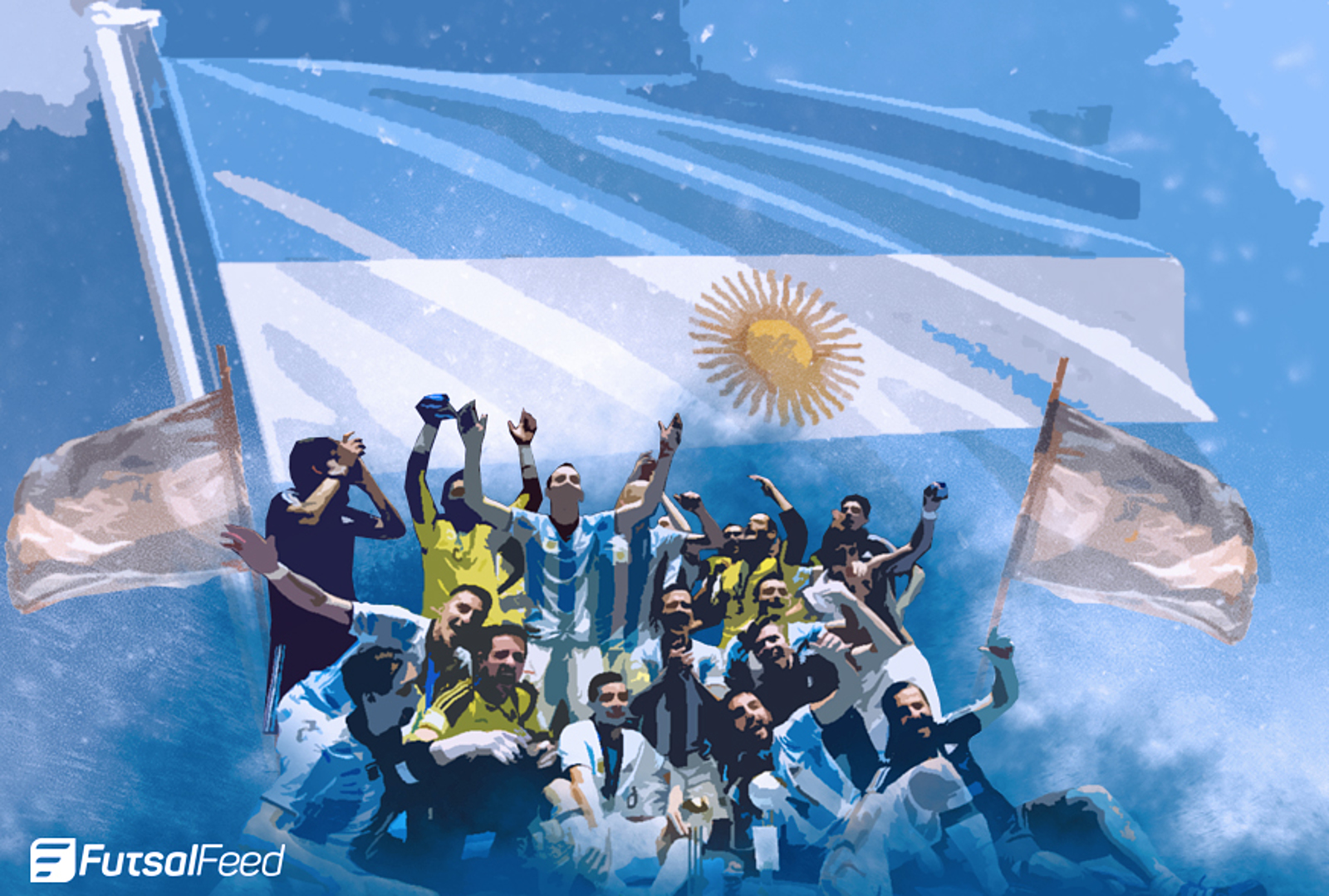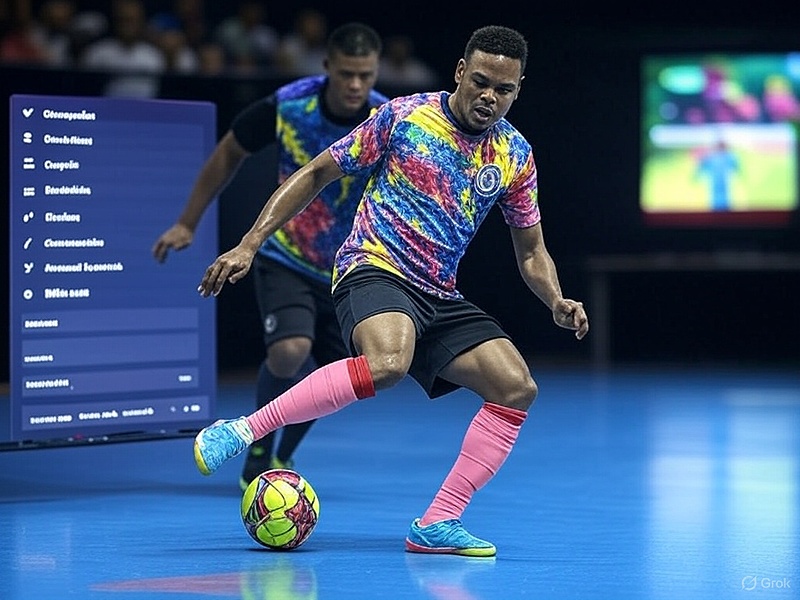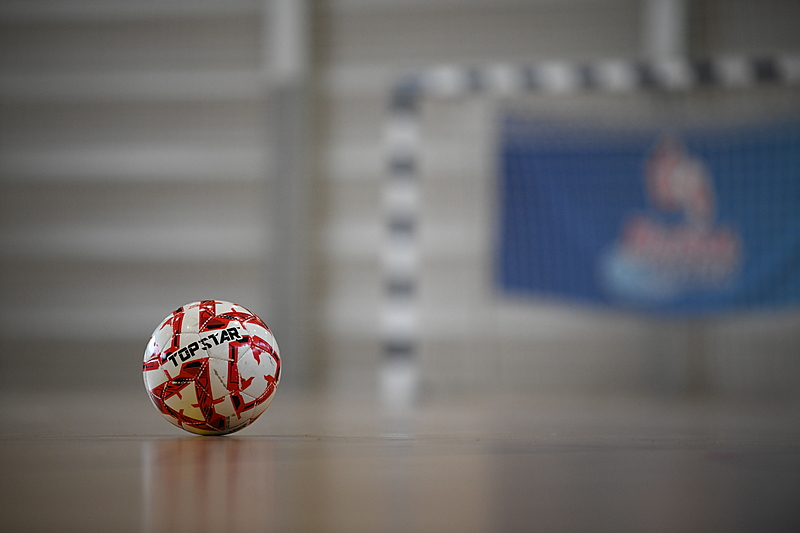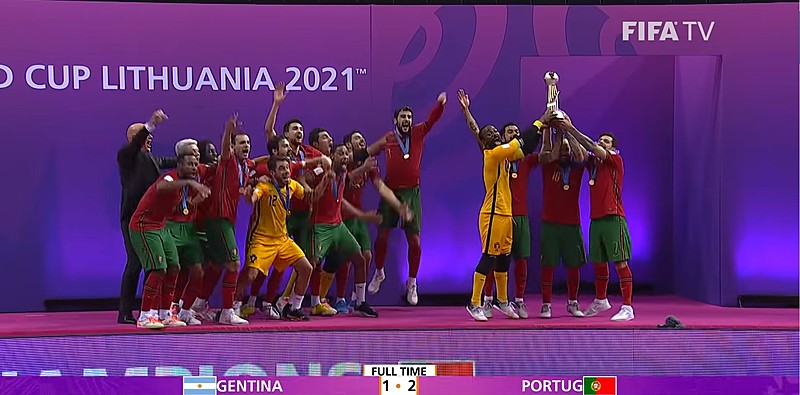It's a breath of fresh air. Those are the words which Javier Lozano, president of the LNFS and at the time member of the FIFA's Technical Study Group, used to describe Argentina's triumph over Russia at 2016 Futsal World Cup final in Colombia. It was Argentina’s maiden World Cup title and first time that someone except Brazil or Spain won this tournament. Futsal in Argentina has experienced quite a loud boom since then and continues to make noise.
World Cup Success
And what a match that was! Russia came to the tournament as a title contender, a status they dully justified by knocking-out tournament favorites Spain out of the competition in quarter-finals with a dominant 6-2 win. Other favorites, Brazil, got knocked-out in the Last-16 phase by determined Iranian side, who in turn got knocked out in the semi-finals by mighty Russians. Argentina was in form for the entire tournament, knocking out Portugal in the semi-finals to secure their spot in the final match.
In the dying minutes of the first half, it was the Russians who opened the scoring with a nice pick by Eder Lima. However, Argentina responded in the same minute with an equalizer by Alamiro Vaporaki and a nice strike from 10m spot by Leandro Cuzzolino put the Argentinians in front just 20 seconds before half-time. Russia equalized immediately in the second half with another nice effort by Eder Lima, but Alan Brandi was even quicker to create advantage for Argentina by scoring two goals in space of one minute. Less than two minutes before full time, Constantino Vaporaki scored on an empty goal and Argentina laid one hand on the trophy. Dmitri Lyskov and Eder Lima respectfully soothed the score-line for Russia, but it was not enough.
One of the stars in the Argentinian team, a Golden Ball winner, Fernando Wilhem said that “it just goes to show that, in this sport, anything can happen until the time runs out.” Most importantly, he added how he hopes “that futsal in Argentina benefits from this across the board. Now is the time to grow the sport.”
One of the persons most responsible for Argentina’s improvement and successful World Cup campaign was their coach Diego Giustozzi, a 38-year-old at the time, who took this job just few years prior. Giustozzi was able to see the bigger picture immediately after Argentina’s triumph. “The impact for us is big, but it’s a lot bigger for those in futsal who have it tougher than we do. There are a lot of people here - people who are not professionals, who don’t get seen - who were waiting for this message to prove that we could do it. And quite simply, we could.” And they did something that was, by his words, ‘unimaginable’ just a couple of years earlier.
What’s also very important to emphasize at this moment is that Argentina’s World Cup success was broadcasted live on television throughout the country and it significantly increased the nation’s interest for futsal. “The fact that now we have games that are broadcasted live and that during the World Cup we reached the whole country on television, is something very valuable,” said Argentinian and San Lorenzo star Damien Stazzone.
>>> Original: The most attended futsal match in history: Brazil vs Argentina
Futsal in Argentina
Firstly, it is important to understand what different futsal competitions exist in Argentina. Main competition is The AFA’s Futsal Championship (Campeonato de Futsal AFA), a league system comprised of four divisions (First Division “A”: 16 teams, Second Division “B”: 20 teams, Third Division “C”: 20 teams and Fourth Division “D”: 32 teams divided in two groups). The league was formed in 1986 and has been considered highest level of futsal in the country and one of the most important leagues on the continent. Winner of the First Division gets a place in South American Copa Libertadores tournament. Club Social y Deportivo Pinocho is the most successful club in the competition having lifted the trophy 14 times.
Main flaw of this massive competition is that it does not include most of the vast country. In fact, all four divisions include clubs surrounding the capital, City of Buenos Aires and Buenos Aires province. Argentina is the 9th biggest country in the world by area and 32nd most populous. This effectively means that around half of the population, in majority of the country, cannot compete at the highest level of futsal.
In 2008, another tournament was formed that was supposed to include more teams from interior of the country. National Futsal Tournament (Torneo Nacional de Futsal) had a varying number of teams participating, but it included two teams from AFA’s Futsal Championship and rest were awarded a spot through regional qualification tournaments.
La Liga Nacional de Futsal Argentina
Following the 2016 World Cup success, the Argentinian FA decided to ‘reform’ National Futsal Tournament by replacing it with Argentinian National Futsal League (Liga Nacional de Futsal Argentina, LNFA) in 2018. Idea behind this ‘reformation’ is to include as much futsal clubs from interior as possible and to develop the futsal structures throughout the country. In the words of Luis Castro, AFA’s Developing Director, “it aims to become the continent’s biggest futsal tournament.”
LNFA is a massive tournament that takes place during nine months in total and it starts with provincial qualification tournaments that take place throughout the country. In its first edition it involved 123 teams from more than 20 provincial leagues. 48 best teams from these tournaments are qualified for regional qualification tournaments. 9 teams are qualified through regional qualifications to the national tournament, while another 3 teams secure their place by winning First Division, Argentinian Cup and Argentinian Super Cup, respectively. In the final (national) phase, the 12 teams are then drawn in 3 groups of 4 teams, meaning that the best team from each group, including the best second-placed team, would proceed to semi-finals. Reward? A place in Copa Libertadores for the victor. “The number of clubs and players showing an interest in participating has increased a lot,” said Jonathan Sanzi, President of the AFA’s National Futsal Commission.
In its first two years of existence, LNFA proved to be a good tool for further development of futsal in interior regions of the country. Official Twitter, Facebook and Instagram accounts were filled with news and reports of the matches even from regional qualification tournaments, but the biggest benefit was that all matches of the national tournament were broadcasted live on league’s official Facebook page. Although including clubs from all over the country, or maybe just because of it, in the first two editions of LNFA we didn’t see any major upsets.
Two champions so far, Villa La Ñata and San Lorenzo are both from Buenos Aires (larger) area, including the two-time runner-up Boca Juniors.
Argentina Today
“Today we have many more tournaments, which are more attractive and more competitive. All of this is important and stimulates growth and gives us more visibility.” said Damien Stazzone.
With ‘reformation’ of the all-inclusive national league, which now includes much larger number of clubs and with much more futsal broadcasts, Argentina has seen a surge in futsal popularity and we can surmise that it did well to develop futsal organizational structures in regions which were underdeveloped futsal-wise.
Of course, this is still a work in process as clubs from the interior have a whole lot of catching up to do and it will take much more time for them to reach the top level. However, knowing that you can shine on the big stage against the top teams in the country can and hopefully will attract investments in some futsal communities for them to grow even further.
“There are provincial representative teams and leagues in other parts of the country that have grown a lot – and will doubtless continue to do so – because of this competition. The knock-on effects in the wider community have also been very positive. The attendances were huge in each city, and there was great coverage in the local media.” said Luis Castro for FIFA.com.
It is worth noting that Argentinian national futsal team won the qualification tournament for 2021 World Cup in Lithuania and, in words of their new coach Matías Lucuix, wants to defend the title there. Argentina also played the final of 2017 Copa America. 2019 Copa America was unfortunately suspended due to non-futsal reasons. Bbecause of COVID-19 pandemic, all futsal competitions in Argentina have been postponed or suspended. Last year, around mid-September, most of the teams for LNFA national tournament were known, which is obviously not the case this year. Also, The AFA’s Futsal Championship did actually start in March, but it was abandoned after just one week.
A news bulletin on Argentinian FA website stated that clubs will return to training during September, so hopefully, we will see some type of futsal championships continuation in the coming months. This year, before the suspension of sports competitions, the Super Cup was held and San Lorenzo emerged as the best from eight team participating, while Ferro were successful in Women’s category. All matches were broadcasted on the AFA’s digital channels which showed commitment of the AFA to further popularize futsal.
If Argentinian national team can keep up the good form and produce another great tournament at World Cup in Lithuania, we just might see another futsal boom in the country!
Found any mistakes in the text? You have some news regarding Argentinian futsal? Be sure to write to us through our contact for or send a message on any of our social media profiles, we will write back!






